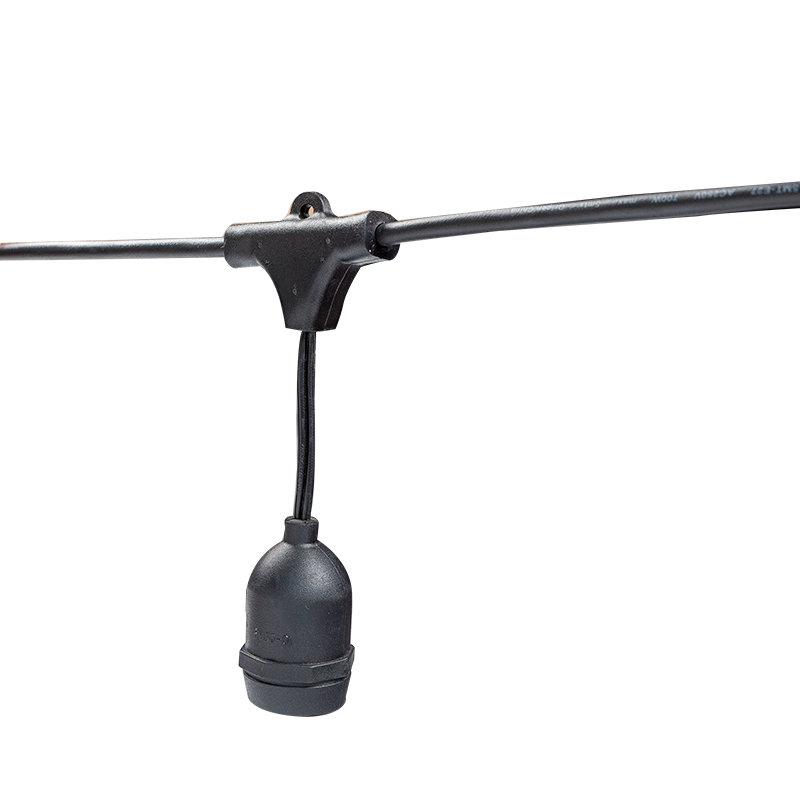When using string lights, choosing the right power source is crucial to ensuring both safety and efficiency. An improper power source can lead to electrical hazards, increased energy consumption, and reduced performance. Here's a guide on how to select the best power source for string lights:
String lights typically operate on either low voltage (12V, 24V) or high voltage (110V, 220V), depending on the design and intended use.
Most modern string lights, especially LED varieties, are designed to use low voltage power. These lights are safer for indoor use and are commonly used in decorative settings like holiday lighting, garden decorations, or around trees. Low voltage string lights often come with a transformer or adapter that converts the mains voltage to the required low voltage.High-voltage string lights are generally used for permanent installations or for outdoor applications. These lights are more powerful and are designed for applications like Christmas lights, event lighting, or large-scale decorations. If you use high-voltage string lights, ensure that the product is suitable for the local electrical standards (110V or 220V depending on your region).Always check the manufacturer’s specifications to verify the voltage compatibility of the string lights with your power supply.
Each string light set will have a wattage rating (how much power it consumes). Ensure that your power source (adapter, plug, or outlet) can handle the wattage of your lights to avoid overloading the circuit.
For LED string lights, wattage is usually low, but if you're using multiple strings of lights, calculate the total wattage. For example, if each string uses 10 watts and you connect 10 strings, the total wattage would be 100 watts. Ensure that your power source (adapter, transformer, or outlet) can support this total load.
For traditional incandescent string lights, the wattage can be higher, so it’s even more important to match the power source accordingly.Check the power rating of your adapter or plug, which should be higher than the total wattage of your string lights.
When choosing a power source, consider how energy-efficient the system is. LED string lights are significantly more energy-efficient than incandescent lights, consuming much less power for the same level of brightness.
LED string lights consume up to 90% less energy compared to traditional incandescent bulbs, making them a more eco-friendly and cost-effective choice in the long run.Incandescent lights tend to heat up more and use more power, leading to higher energy bills and potential safety risks, especially if left on for long periods.Opt for LED string lights and a low-power adapter for maximum energy savings and to reduce the environmental impact.

If using low-voltage LED string lights, an adapter or transformer will be required to convert standard mains electricity (110V/220V) to the required lower voltage (typically 12V or 24V). Ensure that the adapter has a sufficient power rating (measured in watts) to handle the total wattage of the lights.
For outdoor use, ensure that the transformer or adapter is weatherproof (IP-rated) to protect it from rain, snow, and moisture. Always buy a transformer or adapter designed specifically for the type of string lights you're using. The voltage and wattage ratings should match the requirements of the lights.
When using extension cords or power strips, ensure they are rated to handle the wattage of your string lights. Check the amp rating of the extension cord or power strip and compare it with the total wattage of the lights.For example, a typical extension cord may be rated for 15 amps, which can handle up to 1800 watts (at 120V). If your total wattage exceeds the rating of the cord or power strip, it can cause overheating and potential fire hazards.Use a weather-resistant extension cord for outdoor installations and avoid daisy-chaining too many extension cords, which can lead to overloading.
Some adapters and transformers come with built-in circuit breakers or overload protection, which automatically cuts off the power if the system is overloaded, preventing overheating and damage.For outdoor installations, particularly in damp or wet areas, it’s a good idea to use a GFCI outlet or adapter. This safety device will shut off power if it detects an imbalance or short circuit, reducing the risk of electric shock.Always ensure that the power source (whether it's an adapter, plug, or outlet) is approved by a regulatory body (e.g., UL or CE), ensuring it meets safety standards.
For long installations, ensure that the power source can handle the total length of the string lights. Long strings may cause voltage drop over distance, especially for low-voltage lights. If your lights are too far from the power source, you may need a higher-rated adapter or a voltage booster.If installing string lights in a large area or over long distances, consider using a power adapter with a higher amperage or splitting the load across multiple power sources.
Ensure the power source has safety features like overload protection and, for outdoor use, weatherproof ratings. Proper installation and regular maintenance are key to ensuring the safety and efficiency of your string lights for a beautiful and worry-free lighting experience.



 English
English русский
русский















